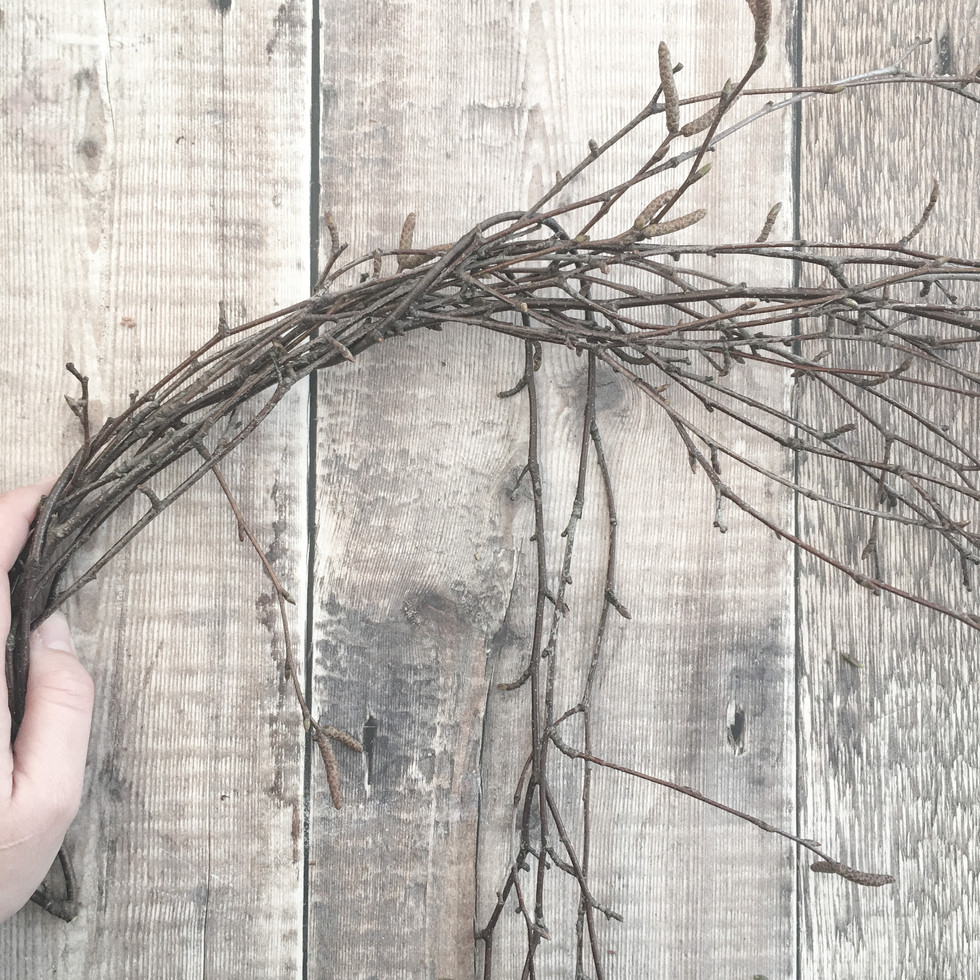Creating a wreath base from a winter garden.
- thecosyshed

- Jan 28, 2020
- 4 min read

I love to bring, collect and arrange nature in my home all year, it is one of those simple things that brings me so much joy. Winter can appear to be short of flowers and foliage but there are some simple ways to bring the outside in and to completely change the feel of your home. You may even be surprised what you find when you go for a winter walk. Winter is a wonderful time to be creative and cosy up of an afternoon up the kitchen table due to the shorter days. You will often find me and my young family sat round the kitchen table, eating, chatting, laughing, baking, drawing, learning and discovering. I love the magic that surrounds a kitchen table, I am sure mine would have some tales to share.
One of my favourite things to do throughout the year is to create wreaths. Some of you will know I have a small business creating dried floral wreaths. Alongside this I regularly create wreaths decorated with fresh flowers from all the seasons for a little welcome on the front door. I will add dried flowers to wreaths to hang indoors, or even using simple foliage or herbs for a fresh feel. Basically what ever I can find and forage. But I really do believe a simple wreath base can look just as beautiful on its own and they are so simple to make. You will be amazed how many materials are so accessible and you will often find not far from your own front doorstep.
This time of year the types of vines you will find are Virginia Creeper which is a fantastic colour, very flexible and its a great thickness if you want a more firmer base. Willow is another one, it can be quite vibrant at the moment but it will dull when dried, again the young growth is very flexible. Silverbirch is one you will find all year but it is best to use it now, this is the time you would prune your tree with no bleeding, also it obviously has no leaves which makes the job far quicker. You may also find some wintering flowering honeysuckles and clematis' in the garden, these create a much more delicate base. It is best to have a play until you create something with the feel that you love.
If you enjoy making wreaths throughout the year, make a little stock of the bases now and pop them away as they will last beautifully until you are ready to use them.
I am going to use three vines to show you how easy it is to make three different bases with very different looks. From left to right, I have collected Willow, Silverbirch and a winter flowering Honeysuckle.
Whichever vines you choose to you, the principle are always very similar.
Hold the cut end of the vine in one hand.
Grab the remaining vines about half way down with the other hand.
Bring the hand that is half way down the vines towards the other hand.
This will create a circular shape, please don't worry if it is not perfect.
You will now have a circular shape formed and the other half of the vine is ready to be weaved through the circle.
Hold the circle shape in one hand and grab the excess vine with your free hand.
Slowly weave the excess through the circle until you have your desired look.
If it is not think enough, simply use another vine to weave around your circle. Continue until you are happy.
Willow is a great vine for beginners, it's young growth is very flexible and it is easy to form in to a strong, wreath base. The colour initally may put your off but the colour will dull as it dries. You may find once you have created your will base you may need to go round and trim a few ends to tidy up the overall appearance.
If you want a more delicate base Honeysuckle's are great for this. This is a winter flowering Honeysuckle so you will find it in a winter garden. The Honeysuckle vines hold really well when formed in to a circle, even with just a vine or two but you may wish to add a small piece of wire to hold it in place before you add the flowers or foliage. It it also a beautiful and rich colour and this particular vine has a sumptuous texture to it.
Silverbirch is a fantastic base for a more wild look and it definitely one of the more popular materials. You will initially probably have to cut the more harder twigs off the vines, from where you have cut them from the tree, you just want the newer, very flexible part of the twig. Once completed in to your circle shape, again you may need to go round and trim round the edges to tidy it up. But often I leave them as they are for that wonderful untamed style.
I really hope you found this useful and any feedback is always welcome. Please don't forget to use #awreatheveryseason so I can see all your beautiful year round creations.
Love Emma x



































Comments